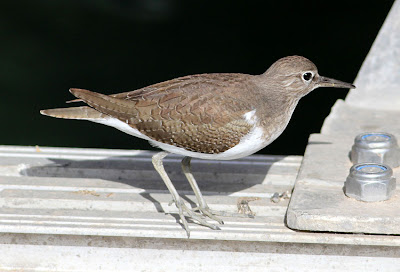I dropped Sue in trendy second-city Ciutadella, the jewel in Menorca’s crown. Here she could put the map away and browse the shops and the market, explore the narrow streets and mingle with the locals, wandering the pedestrianised old city with its many narrow streets of hidden sights, shops and cafe treats.
Well that was my excuse as the car stopped at Café Bar Es Moli from where I joined the ring road towards the north of the island and a few well-chosen birding spots. There’s a bit of a narrow, dodgy one lane road where giving way is test of nerves of who chickens out first. Eventually after many stops in tiny roadside spaces to bird from the car I reach the calm oasis of Punta Nati. Here there are Short-toed Larks, Thekla Larks, late Whinchats and Wheatears still heading for Europe and more of those ridiculously blue thrushes. There were raptors too enjoying the warm, lifting air and the plethora of food on offer below - Red Kite, Egyptian Vulture, Booted Eagle, Marsh Harrier, Kestrel and Red-footed Falcons.
Punta Nati - Menorca
Whinchat
It’s too easy to forget the gulls in the search for passerines or raptors, but there are Yellow-legged Gulls aplenty and small numbers of Audouin’s Gull enjoying the coastal scenery even here in the remote north.
On the way back to Ciutadella I stop at the Cattle Egret noisy and active colony , still here after many years despite the building of holiday lets close by.
The shopping bags appear full, and so is my notebook - It’s another successful day in Menorca for Another Bird Blog.
News from later - Corncrake. Montagus Harrier, Whiskered Tern, Spoonbills, Glossy Ibis and European Roller. Still 25 degrees.
News from later - Corncrake. Montagus Harrier, Whiskered Tern, Spoonbills, Glossy Ibis and European Roller. Still 25 degrees.
Back soon from the Balearics when I promise to catch up with Blogger friends.

























































..jpg)

















